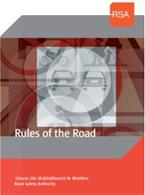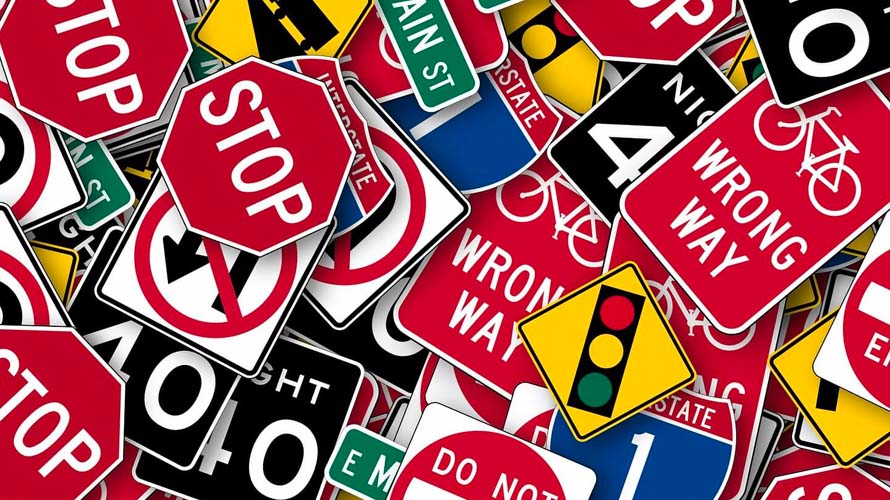
Road Signs Ireland
Road signs are the standard means of regulating behaviour on the motorways in Ireland to communicate basic rules and regulations through simple graphics that can be understood easily.
In most of the parts, these road signs usually appear generic and similar to those found in other places across Europe and beyond, but it is important to mention that road signs in Ireland may have a few unique differences and exceptions.
Road Signs Ireland
Learn all the Road Signs in Ireland all in one place!
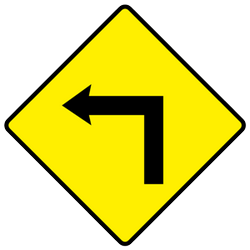
Dangerous corner ahead
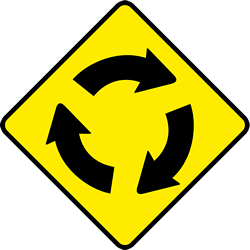
Roundabout ahead
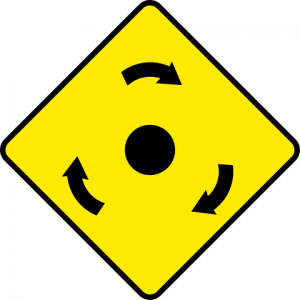
Mini-Roundabout ahead
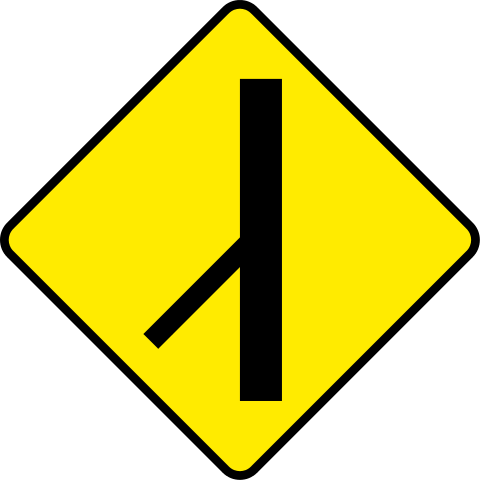
Merging traffic
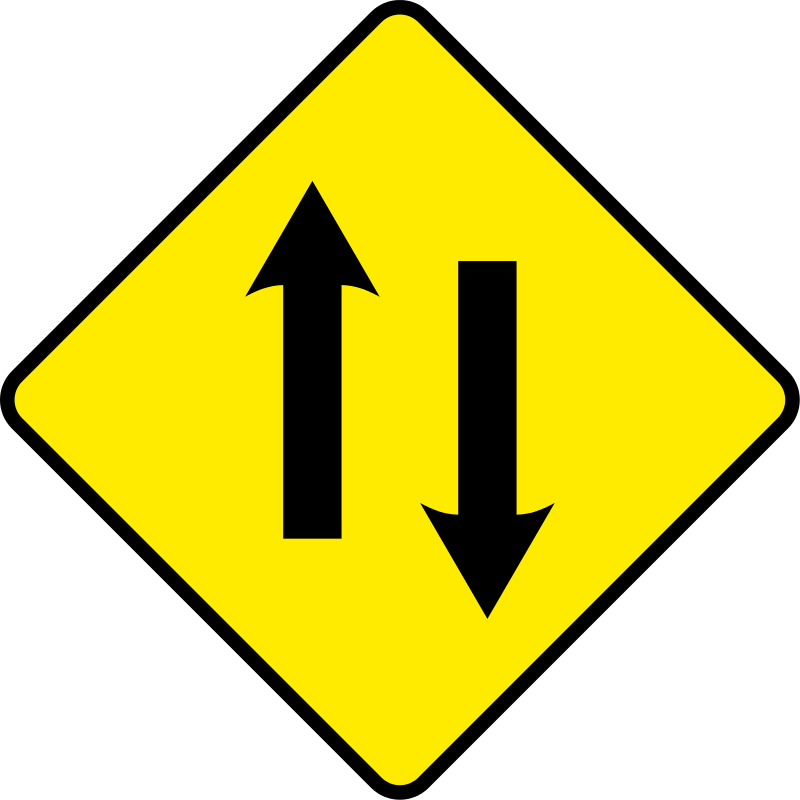
Two-way traffic
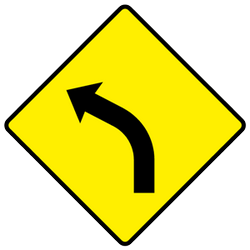
Dangerous bend ahead
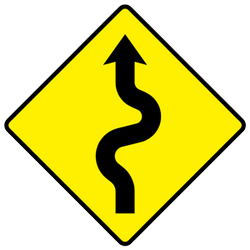
Series of dangerous bends ahead

Series of dangerous corners ahead

Restricted headroom
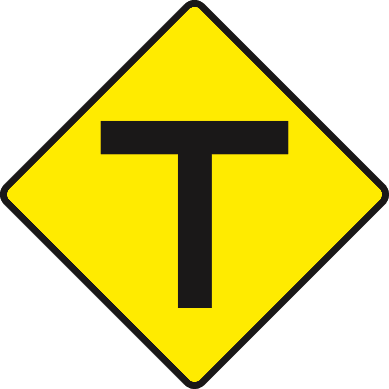
T-junction
Dangerous Corner Ahead
It is a right angled pointer and its pointer shows the driver which side, the road is going to make a sharp turn, It shows a very turn in any direction and no matter how much experienced you are, you need to take care of this sign and give more attention and use horn in this case.
Roundabout Ahead
It is a sign showing three arrows making a circle and pointing towards the next arrow showing that there is a big roundabout near you ahead and you should slow down and concentrate on the path carefully.
Mini-Roundabout Ahead
Ireland has a complex road structure and has roundabouts in most of its road junctions. This consists of three arrows making a circle with a small circle in the centre showing a small roundabout ahead. So you need to slow down and pass through it carefully.
Merging traffic
It is a sign showing that the two roads are going to merge ahead and all the traffic is going to pass through a single lane. The signs have two lanes merging at a point to show the merger of traffic.
Two-way traffic
It consists of two arrows pointing in opposite directions to show that the road has two lanes to let traffic go in both the directions divided by a concrete ridge. Also, each lane is further divided into fast and slow lanes. So, you must drive carefully whether the lane is fast and slow and drive accordingly.
Dangerous Bend Ahead
Sometimes this sign is confused with the dangerous corner but as both of them show the dangerous turn ahead. But the dangerous bend shows the presence of a steep curve whereas the dangerous corner shows the turn at right angles. On this road, you need to slow down and give horn to prevent any mishappening if two vehicles are crossing the turn at the same time.
Series of dangerous bends ahead
This is a snake-like looking sign showing there are multiple bends ahead on the road due to tough topography or rough roads. It is generally placed on the hilly areas and areas that pass through forests and other difficult areas.
Series of dangerous corners ahead
This sign contains an arrow with multiple sharp bends showing that the road ahead is going to take multiple sharp turns one after the other within the single lane only. This is to aware the drivers to slow down and look for the turns as it won’t be visible ahead for the upcoming vehicles.
Series of dangerous bends ahead
This is a snake-like looking sign showing there are multiple bends ahead on the road due to tough topography or rough roads. It is generally placed on the hilly areas and areas that pass through forests and other difficult areas.
Series of dangerous corners ahead
This sign contains an arrow with multiple sharp bends showing that the road ahead is going to take multiple sharp turns one after the other within the single lane only. This is to aware the drivers to slow down and look for the turns as it won’t be visible ahead for the upcoming vehicles.
Restricted Head rooms
It is a sort of restriction on the vehicles passing through this road. It shows the signs of allowing only a particular kind of vehicle to pass through as a vehicle with a limited height and width. If your vehicle does not fit in the specifications as given then you will face restrictions ahead.
T-Junction
It shows that the lane you are travelling in is going to enter the new straight lane or the lane is going to merge into a highway which has more traffic. While entering the wider road, you must take care of the other vehicles passing by as the speed of vehicles travelling on this road generally passes with higher speed.
Junction Signs
It shows the sign of merger of roads into wider long roads and presence of more traffic with vehicles of high speed that requires more care.

Crossroads

Side road

T-junction
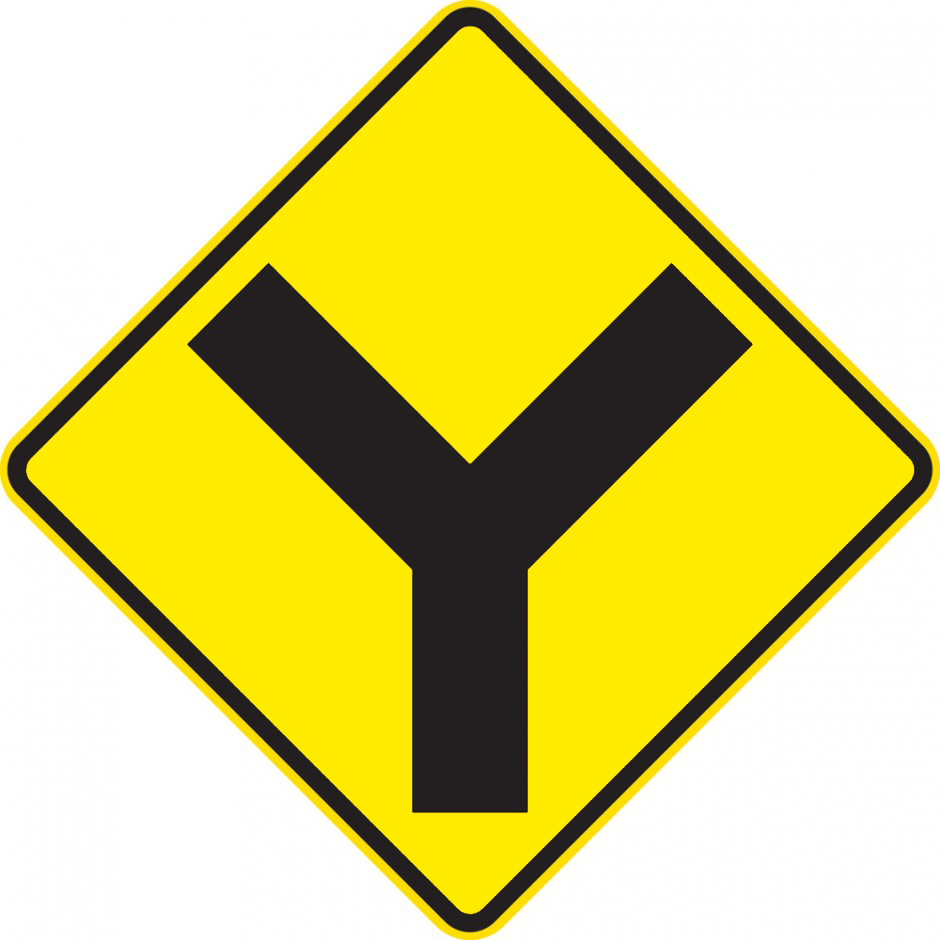
Y-junction

Staggered crossroads
Advanced Warning Signs of Roads
These driving test road signs insist to take certain actions ahead and warn regarding some condition so that the driver can take extra care while passing through these junctions.
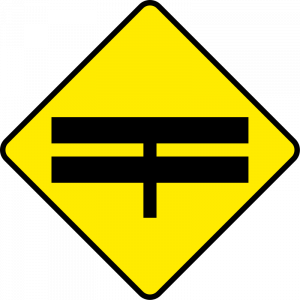
T-junctions of a dual carriageway
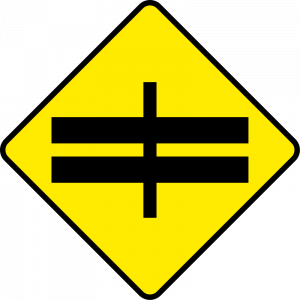
Crossroads with dual carriageway
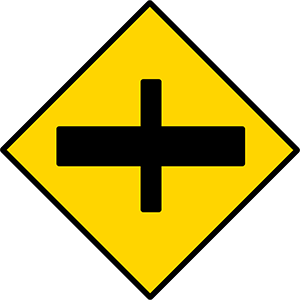
Crossroads
General Warning Signs
The other warning signs are used to give information regarding upcoming hurdles or the movement of other things like animals, cyclists or a sudden change ahead like slippery road or sudden dip which might not get noticed through eyes only so that you can take the necessary precautions and do not fall into some mishappening.
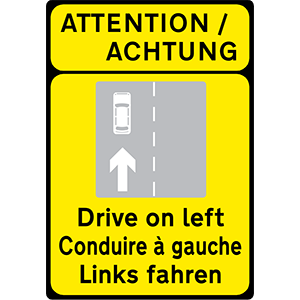
Drive on left
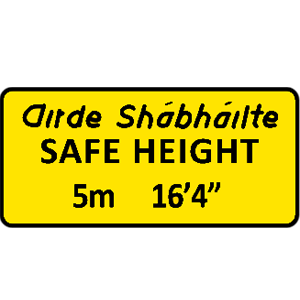
Safe height plate
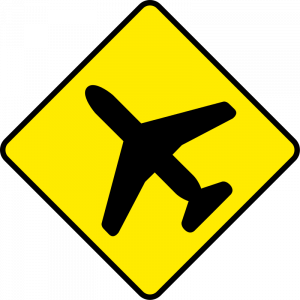
Low-flying aircrafts
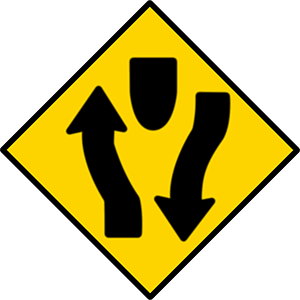
Road divides
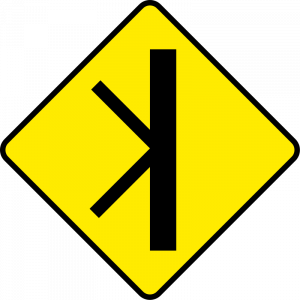
Merging/diverging traffic
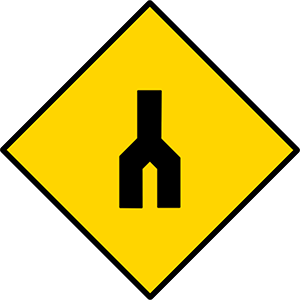
Dual carriage ends
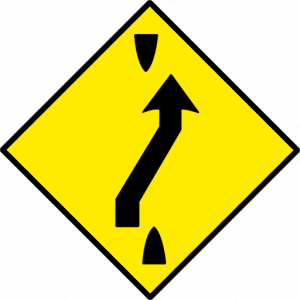
Traffic crossover ahead
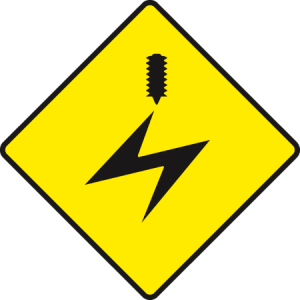
Overhead electric cables
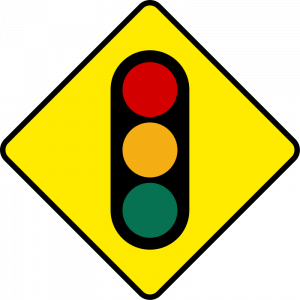
Traffic signals ahead
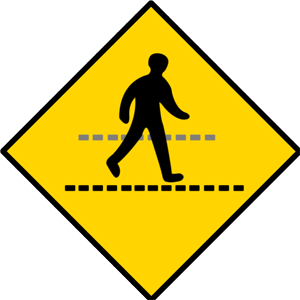
Pedestrian crossing ahead

Slippery road ahead
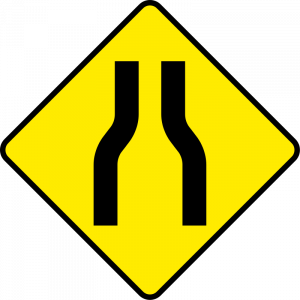
Road narrows on both sides

Road narrows from left
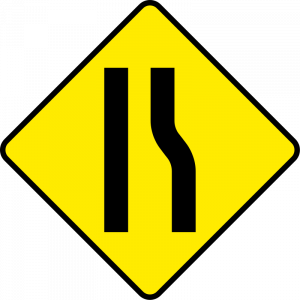
Road narrows from right
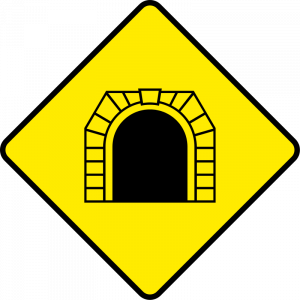
Tunnel ahead
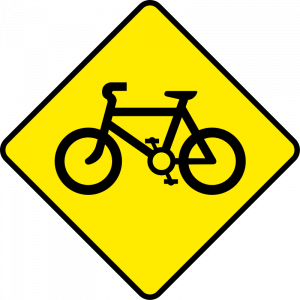
Cyclists

Start of a passing lane
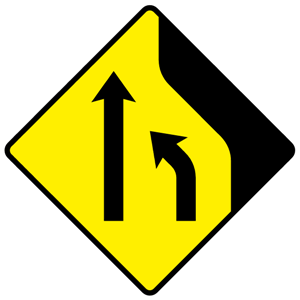
Lane loss

Start of a climbing lane

Loop road ahead
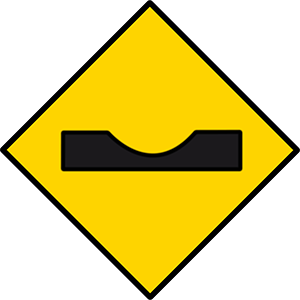
Sharp dip ahead
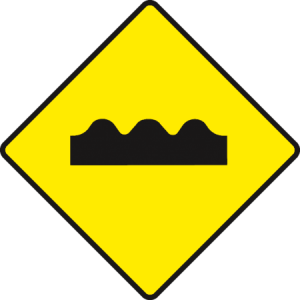
Series of bumps ahead

Sharp rise ahead
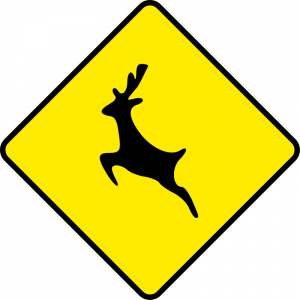
Wild animals ahead

Sheep

Cattle and farm animals
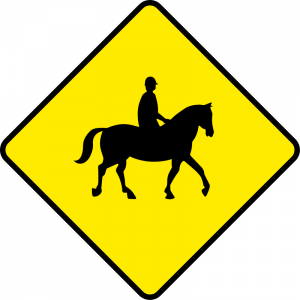
Accompanied horses and ponies
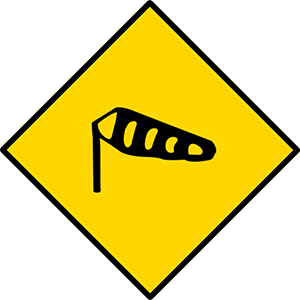
Crosswinds

Steep descent ahead
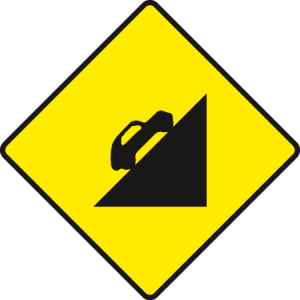
Steep ascent ahead

Danger of falling rocks
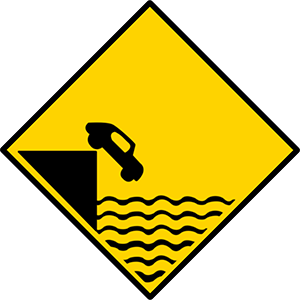
Unprotected quay, canal or river
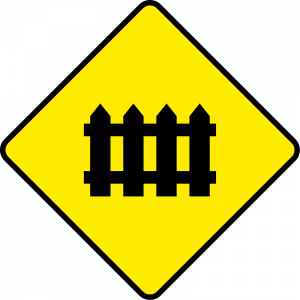
Level crossing ahead, guarded by gates or lifting barrier
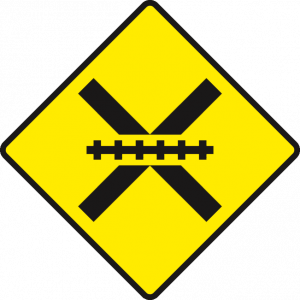
Level crossing ahead, unguarded by gates or lifting barrier
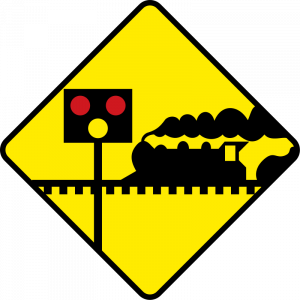
Level crossing ahead, guarded by gates or lifting barriers

Stop when lights are red
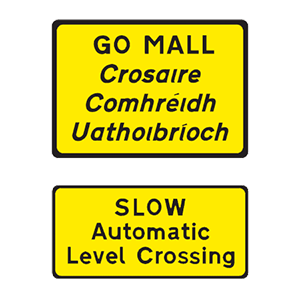
Automatic level crossing ahead
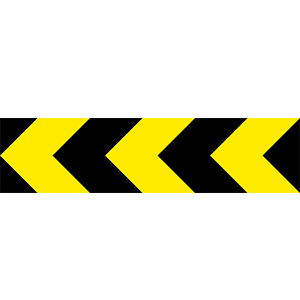
Chevron board (left)
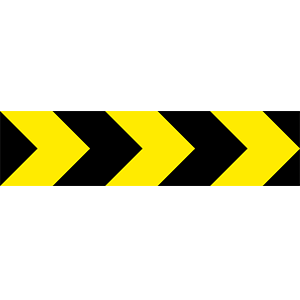
Chevron board (right)
Tram Signs
If there is a track for railway lines or a tram moving ahead then the tram signs are placed to make you aware of the network so that you can slow down, look both sides and when it is safe then only cross it.
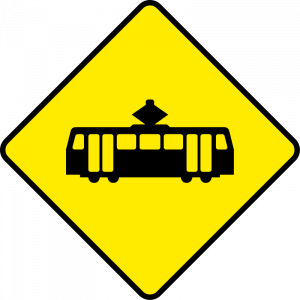
Tram lane crossing ahead
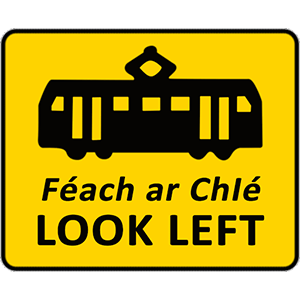
Tram lane warning signs for pedestrians (look left)
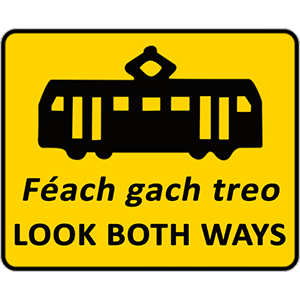
Tram lane warning signs for pedestrians (look both sides)
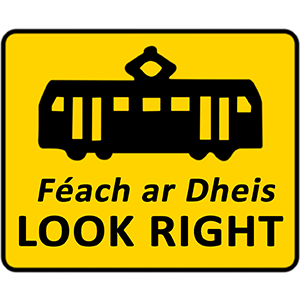
Tram lane warning signs for pedestrians (look right)
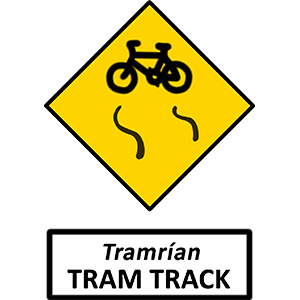
Slippery for cyclists
Warning signs for schools and children
To restrict the drivers from over speeding and to protect the children, road signs are placed in the way to mark the schools ahead.
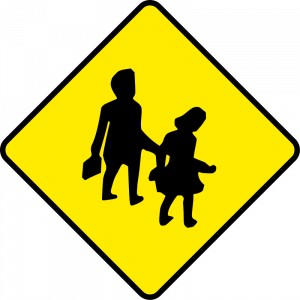
School ahead

School children crossing ahead
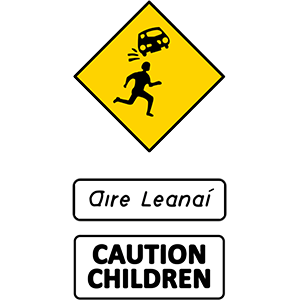
Children crossing ahead (in residential areas)
Warning signs for road work
If there is construction work on the roads and men are at work to ensure the safety of the workers and the drivers both, road work warning signs are placed to make them use the safe way out of the sight.

Road works ahead
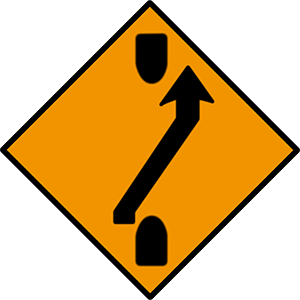
One-lane crossover (out)

One-lane crossover (back)
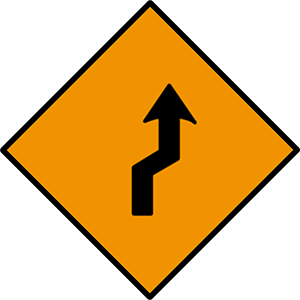
Move to right (one lane)
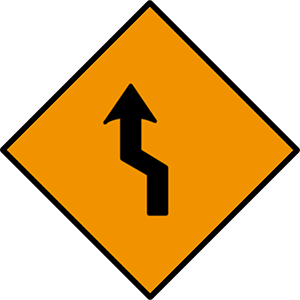
Move to left (one lane)
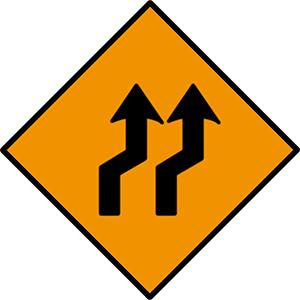
Move to right (two lanes)
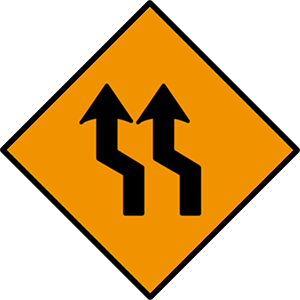
Move to left (two lanes)
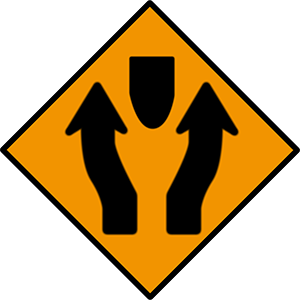
Obstruction between lanes
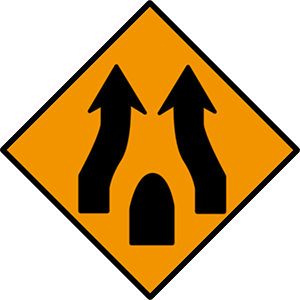
End of obstruction between lanes
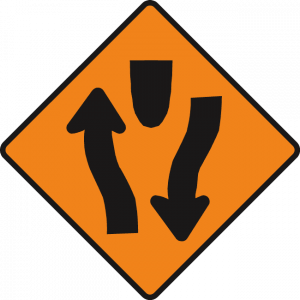
Start of central reserve or obstruction
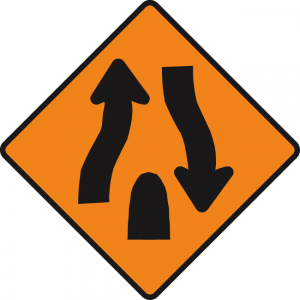
End of central reserve or obstruction
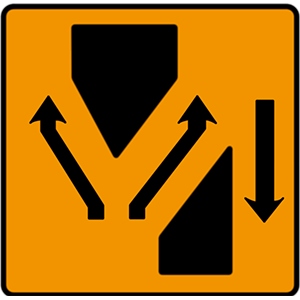
Lanes diverge at crossover
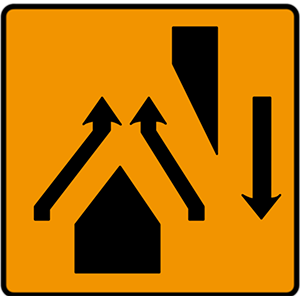
Lanes rejoin at crossover

Two-lanes crossover (back)

Two-lanes crossover (out)
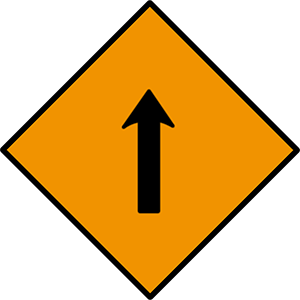
Single-lane (for shuttle working)
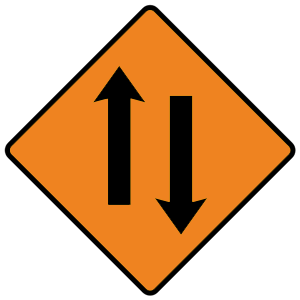
Two-way traffic

Road narrows from left

Road narrows from right

Road narrows on both sides

Offside lane (of two) closed
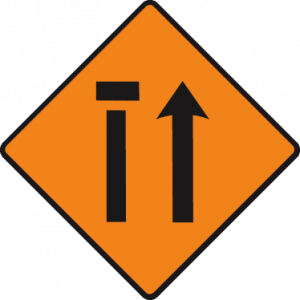
Nearside lane (of two) closed
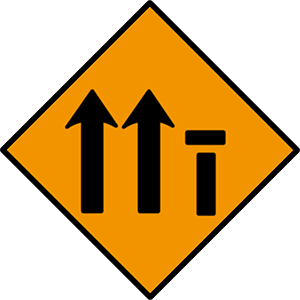
Offside lane (of three) closed
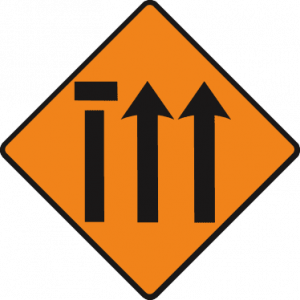
Nearside lane (of three) closed
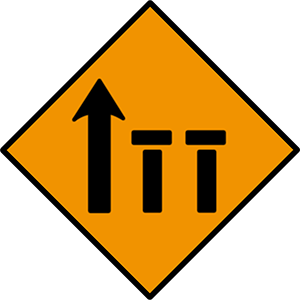
Two offside lanes (of three) closed
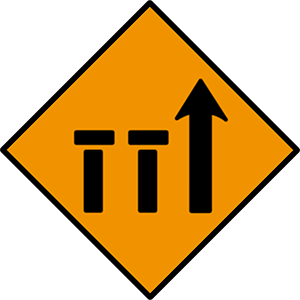
Two nearside lanes (of three) closed. Two alternative styles
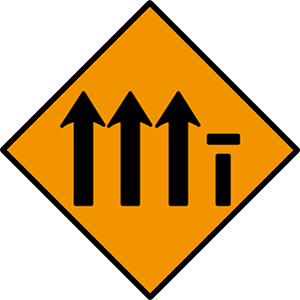
Offside lane (of four) closed

Nearside lane (of four) closed
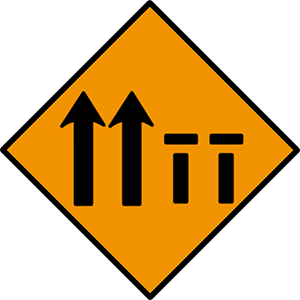
Two offside lanes (of four) closed
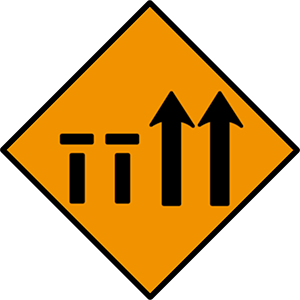
Two nearside lanes (of four) closed
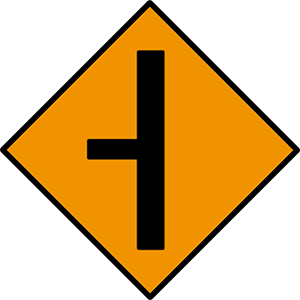
Side road on left
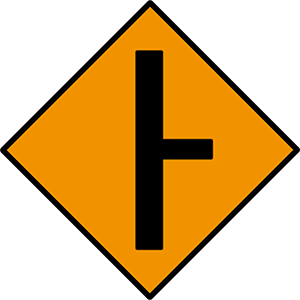
Side road on right
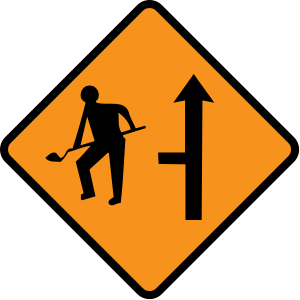
Site access on left
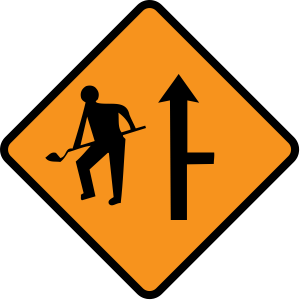
Site access on right
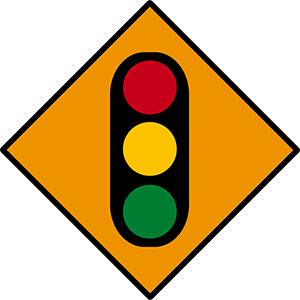
Temporary traffic signal ahead
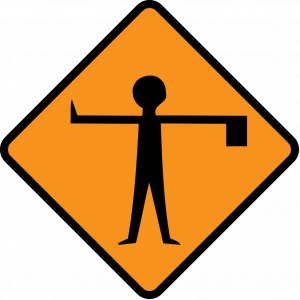
Flagman ahead
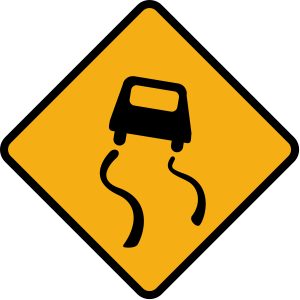
Slippery road

Loose chippings
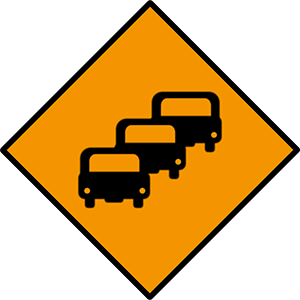
Queues likely
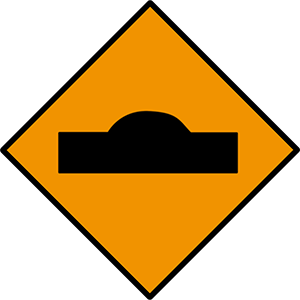
Hump or ramp
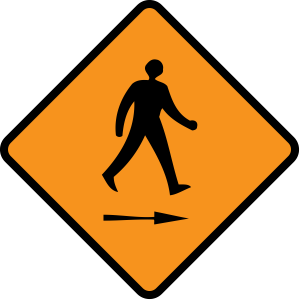
Pedestrian cross to right
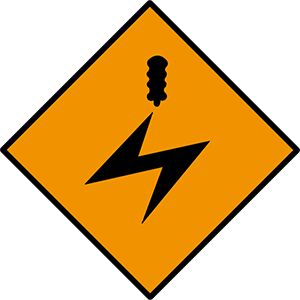
Overhead electric cables

Pedestrian cross to left
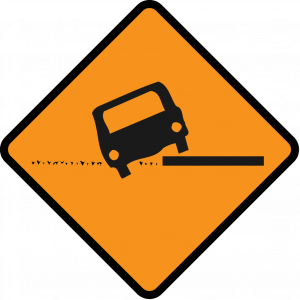
Uneven surface
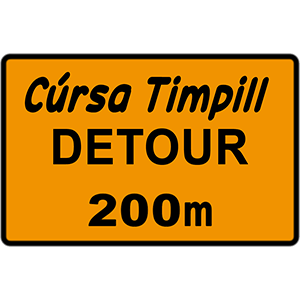
Detour ahead
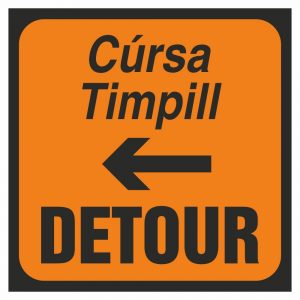
Detour to left
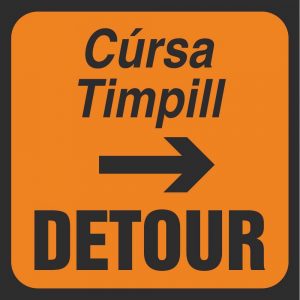
Detour to right
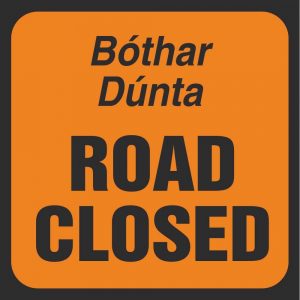
Road closed
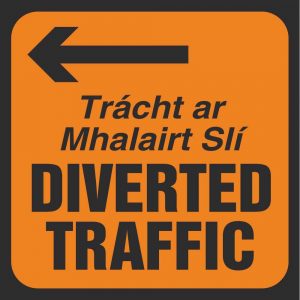
Diverted traffic left
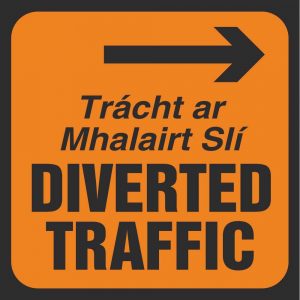
Diverted traffic
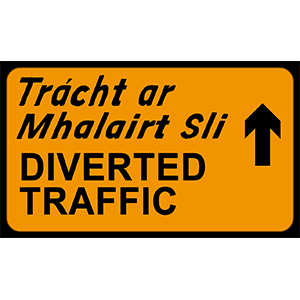
Diverted traffic

Diverted traffic

End of detour
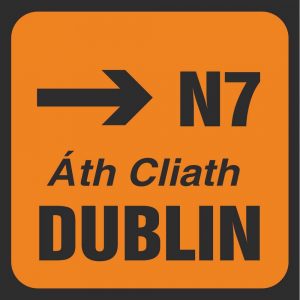
Detour destination
Informative Signs for work at road
To give the information of the nature of work or construction at the roads, the speed limit that they have to maintain, the dimensions of the vehicle that can pass through and other regulatory signs.
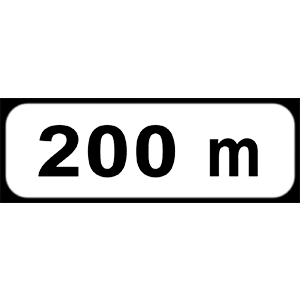
Distance

Length

Direction

Direction and distance
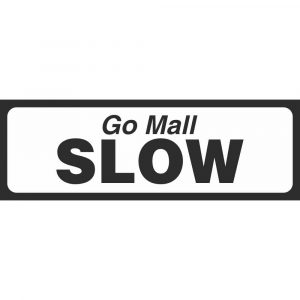
Slow

End

Cautionary speed
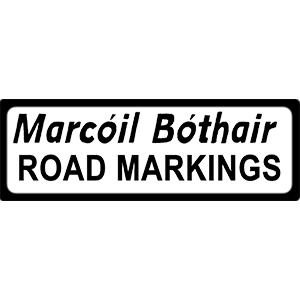
Type of works
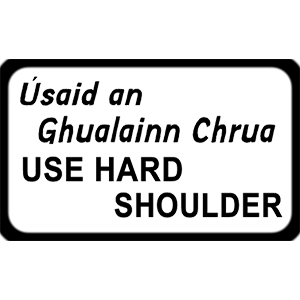
Use hard shoulder
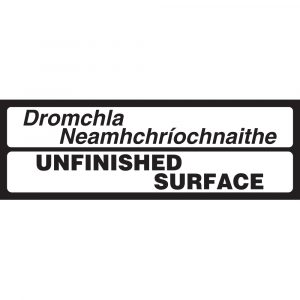
Unfinished road surface
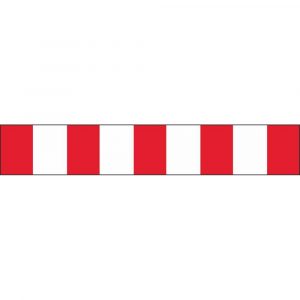
Barrier board
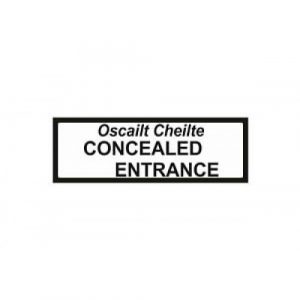
Concealed Entrance
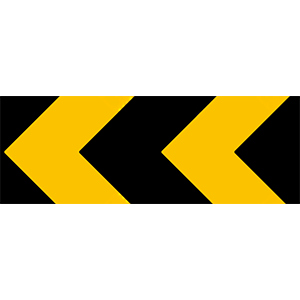
Chevron board

Speed limit ahead
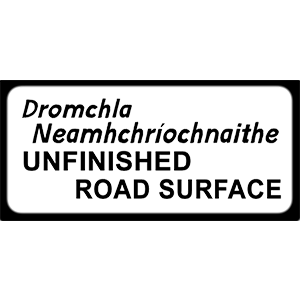
Speed limit ahead
Manual Signs for Traffic control at road
The signs to direct the vehicles on the way to move.
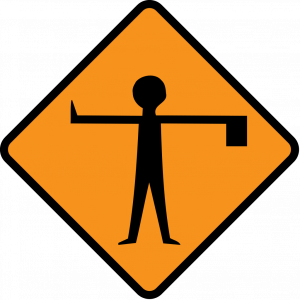
Flagman ahead

Stop

Either form of go can be used

Either form of téigh can be used
Regulatory Traffic Signs
Traffic control signs are used to regulate the vehicles in a specific order. These are primarily for the new drivers entering the area to inform them about the rules which when violated might attract stiff penalties and to make them aware all the time during their journey so that they don’t forget to follow it.
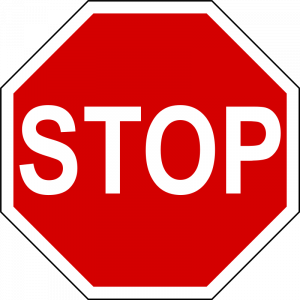
Stop

Yield

School wardens stop sign
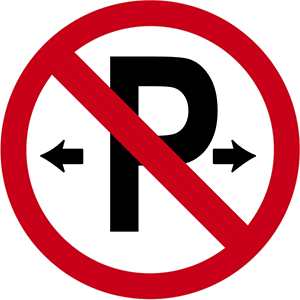
Parking prohibited
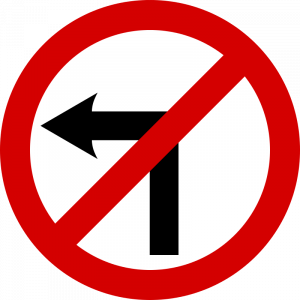
No left turn
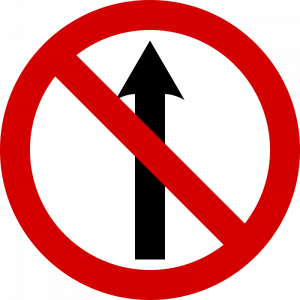
No entry or ‘No straight ahead’
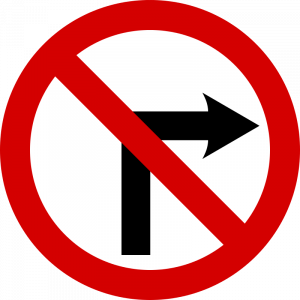
No right turn
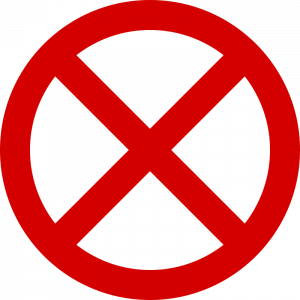
Clearway

Max speed limit 30kmh
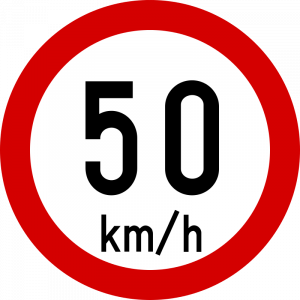
Max speed limit 50kmh
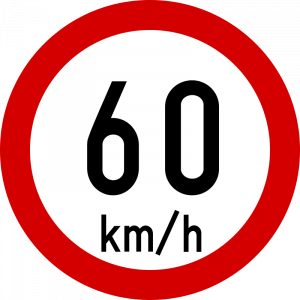
Max speed limit 60kmh
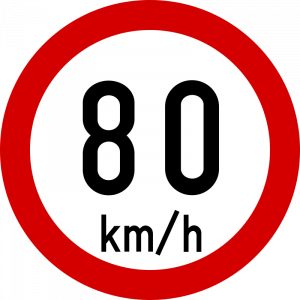
Max speed limit 80kmh
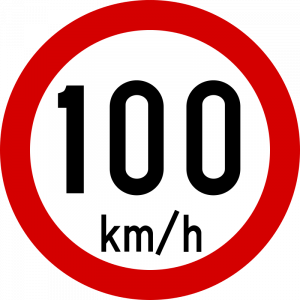
Max speed limit 100kmh

Max speed limit 120kmh
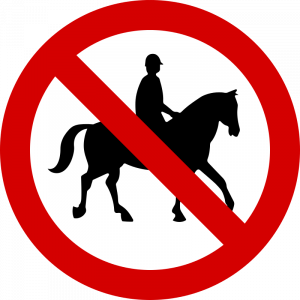
No ridden or accompanied horses
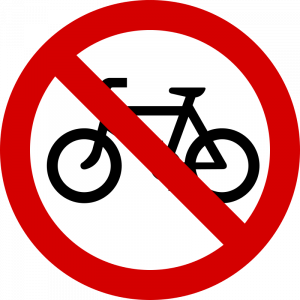
No bicycles
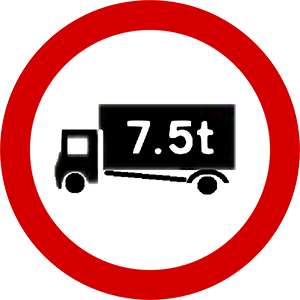
Maximum gross weight (traffic management)
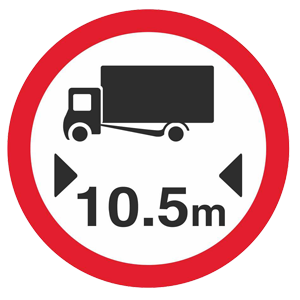
Maximum vehicle length
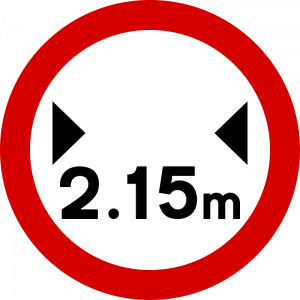
Maximum vehicle width
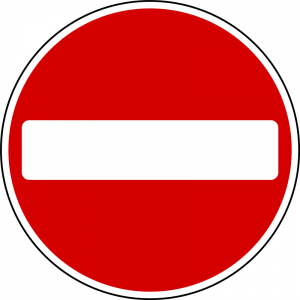
No entry to vehicles
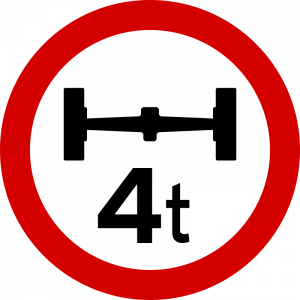
Maximum axle weight
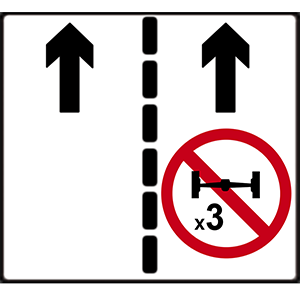
No overtaking for three-axle vehicles
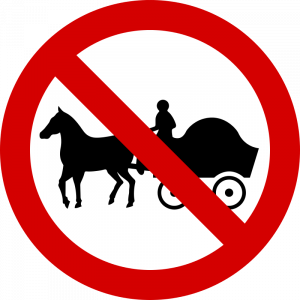
No horse carriages

Height restriction
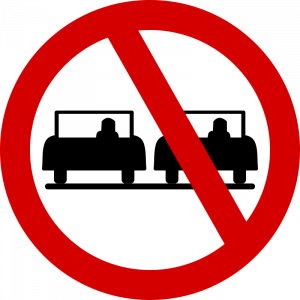
No overtaking
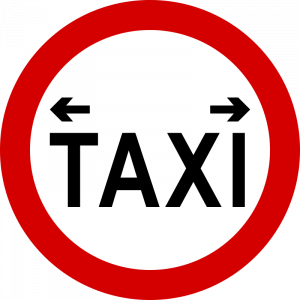
Taxi rank

No entry for large vehicles (by reference to weight)
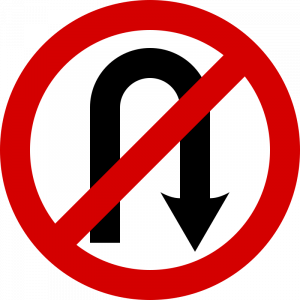
No U-turn

End of the restriction zone
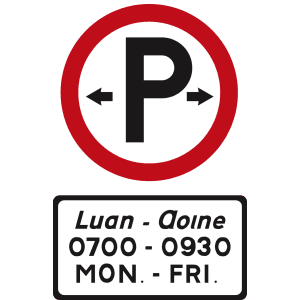
Parking permitted
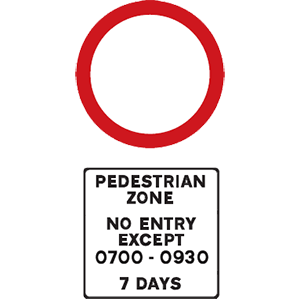
Pedestrianised street
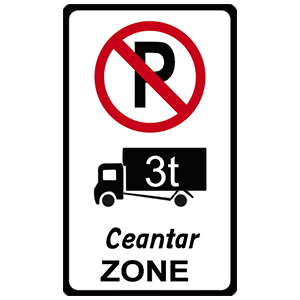
Zonal restriction – parking of large vehicles
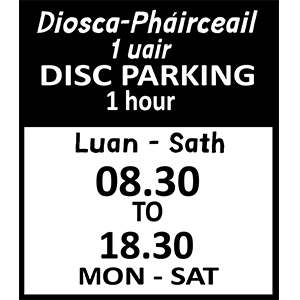
Disc parking plate
Mandatory Turns at Junctions
To show the one way turns ahead which are compulsory to take and follow to move ahead on the path.
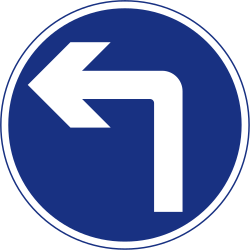
Turn left ahead
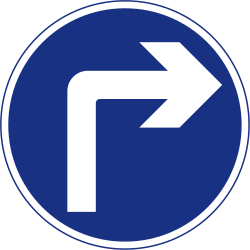
Turn right ahead
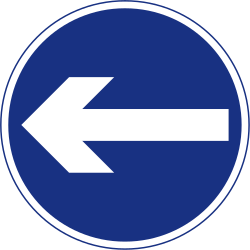
Turn left

Turn right

Straight ahead
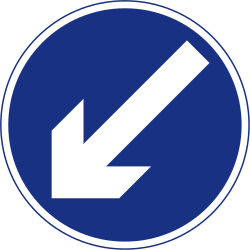
Keep left

Keep right

Pass either side

Mini roundabout
Other Manual Work Signs for work at road

Stop

Either form of Go
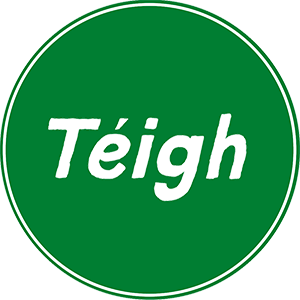
or Téigh can be used
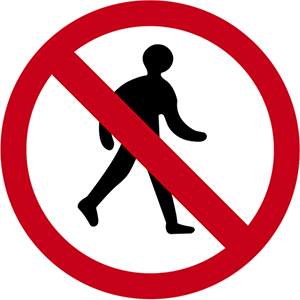
No entry for pedestrians to tramway
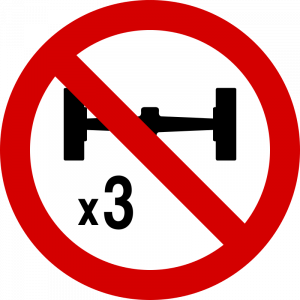
No entry to goods vehicles (by reference to number of axles)
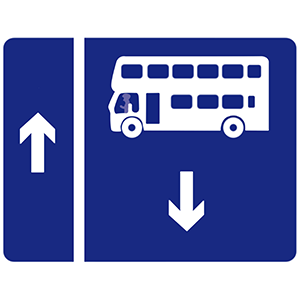
Contra flow bus lane
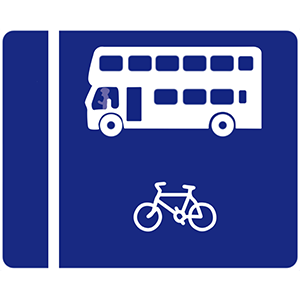
With flow bus lane on right
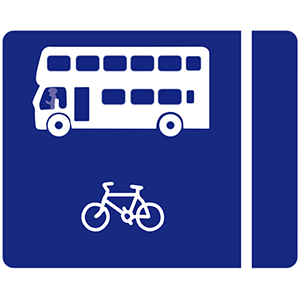
With flow bus lane on left
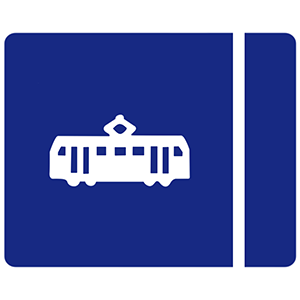
Tram lane on left
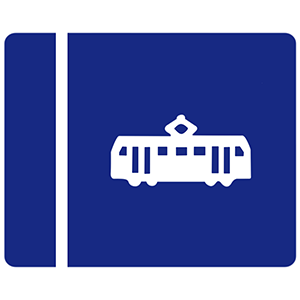
Tram lane on right

Start of cycle track
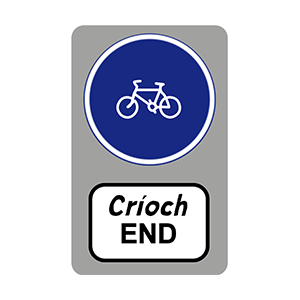
End of cycle track

In a tunnel goods vehicles cannot use right-hand lane (by reference to number of axles)

Electronic periodic speed limit sign

Electronic periodic speed limit sign at school
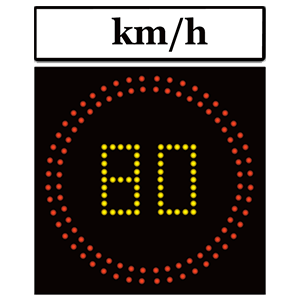
End of cycle track

Tram only street ireland
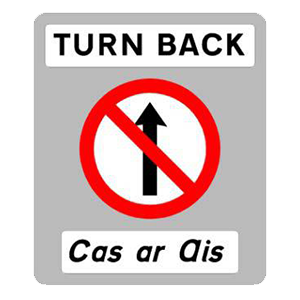
Turn back

Tram and access only street
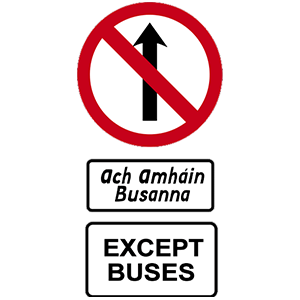
Bus only street
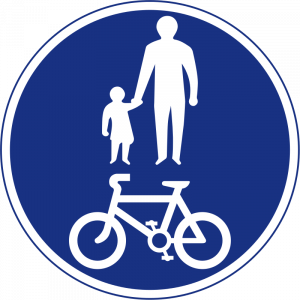
Pedestrians and bicycles only
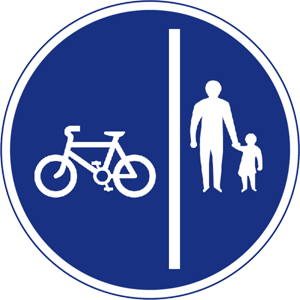
Separate bicycle and pedestrian lanes
Traffic Lane Signs
To direct the drivers for the possible way ahead and to manage the movement of traffic by allowing a specific lane to move at a time.
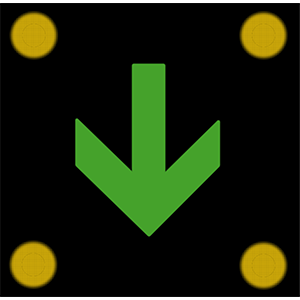
Go (Lane open)
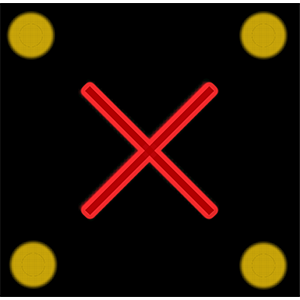
Stop (Lane closed)
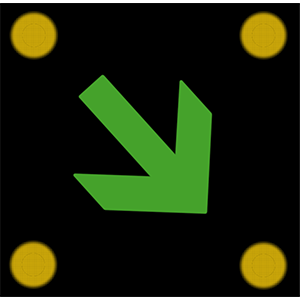
Move into the right-hand lane
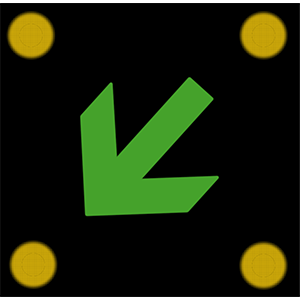
Move into the left-hand lane
Variable Message Signs
To show the information other than the traditional traffic road signs.
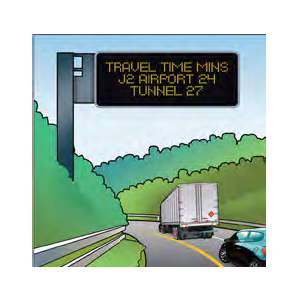
Overhead VWS
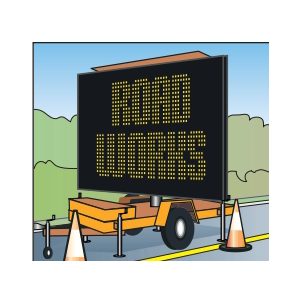
Mobile VMS displaying text message
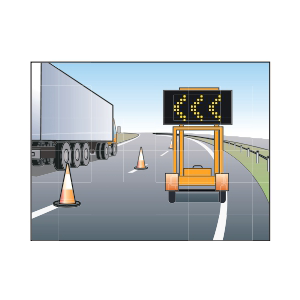
Mobile VMS displaying chevrons
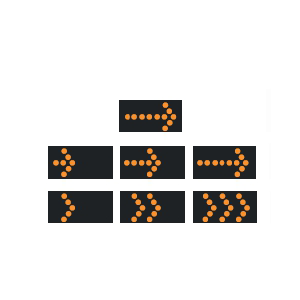
VMS chevron formats
Advance Information Signs
To make the drivers aware of the road type, the speed limit on it and to know about the vehicles and the traffic on the road.
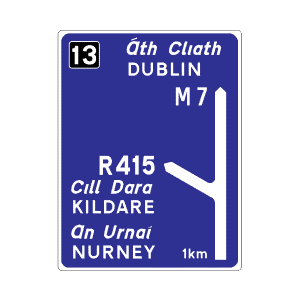
Motorway

National road
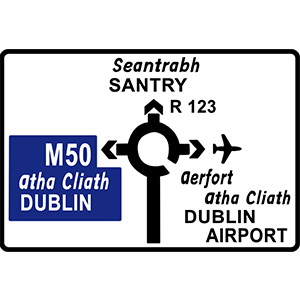
Regional road
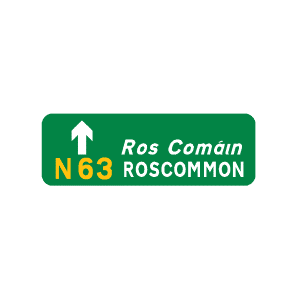
National road

Lane destination sign
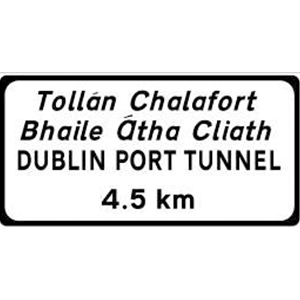
Dublin Port Tunnel ahead
Advance Direction Signs
These are to show the national highway instructions, path for nearest stop, upcoming destinations with the distance between them and more.
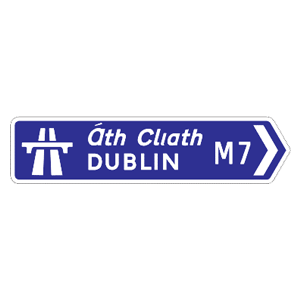
Motorway direction sign
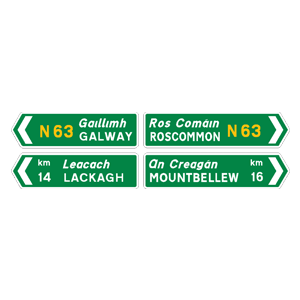
National road direction signs
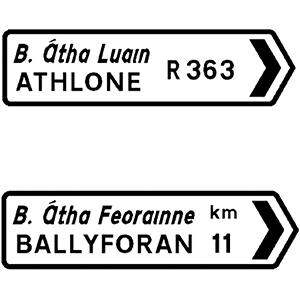
Regional road direction sign
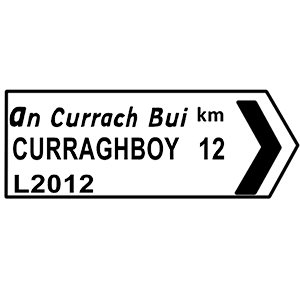
Local road direction sign
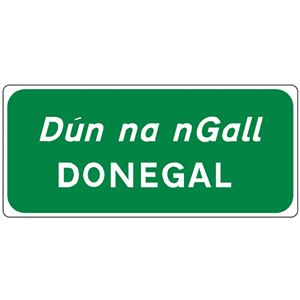
Town or village sign
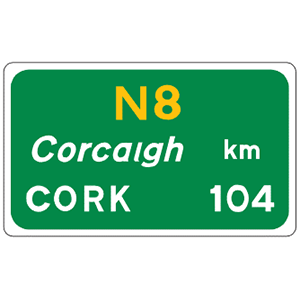
Destination distance sign
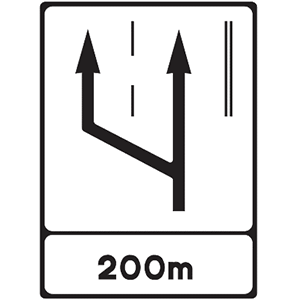
Slow lane sign
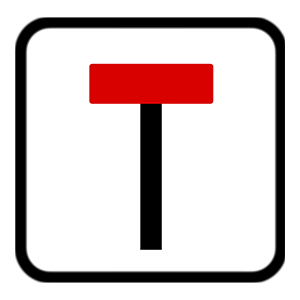
Cul-de-sac

Disabled persons parking bay
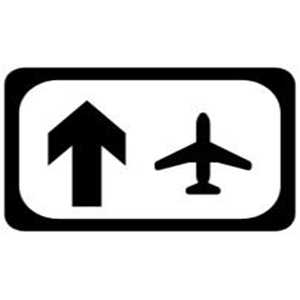
Airport symbol

Industrial estate symbol
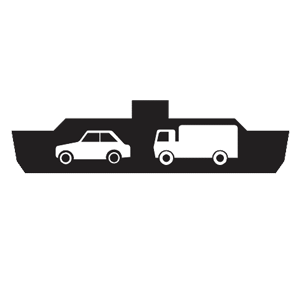
Ferry symbol
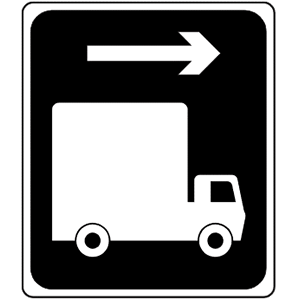
Alternative route for high vehicles
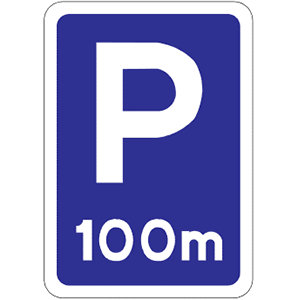
Lay-by ahead sign
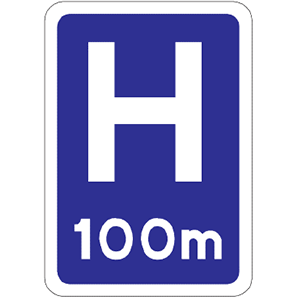
Hospital ahead sign
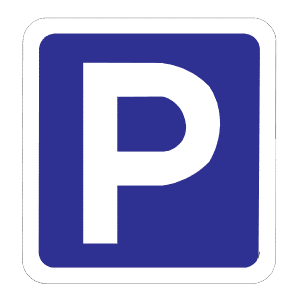
Lay-by sign
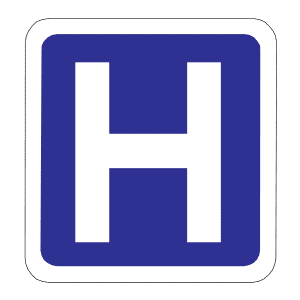
Hospital sign
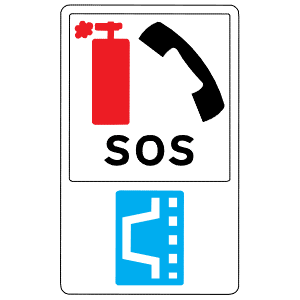
SOS lay-by

Car park with facilities for disabled person
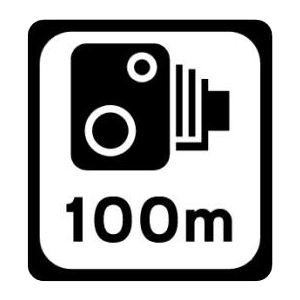
Speed camera
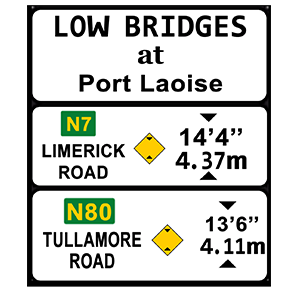
Advance information sign for low clearance
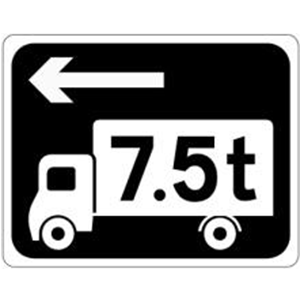
Alternative route for heavy vehicles
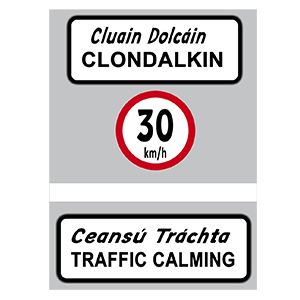
Traffic calming sign
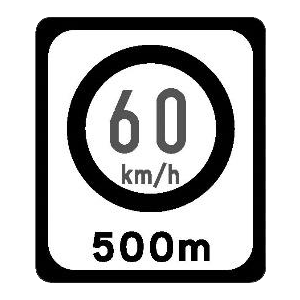
Speed limit change ahead

Traffic calming sign

Supplementary plate

Ramps on road
Tourist Information Signs
This is to direct the travellers about the type of road and the vehicles which are allowed to move, the next destination on the road and the upcoming places like the ferry sign, nearest village, industrial region and much more.

Advance sign for facilities in lay-by
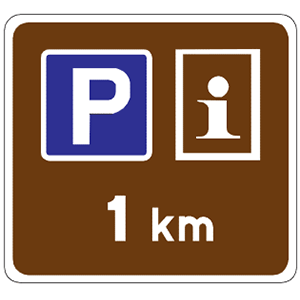
Advance sign for lay-by with tourism information
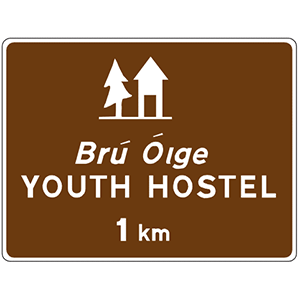
Tourist Information Signs

Advance direction to local services
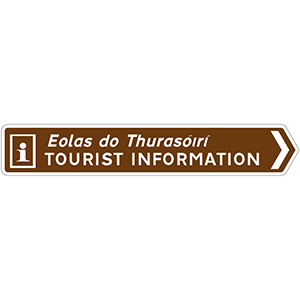
Sign to approved tourist information points
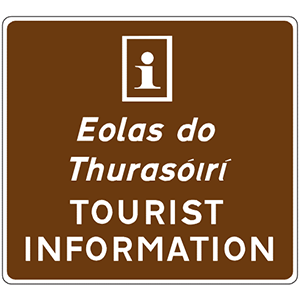
Signing to approved tourist information
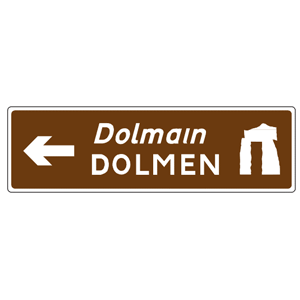
Tourist advance direction sign
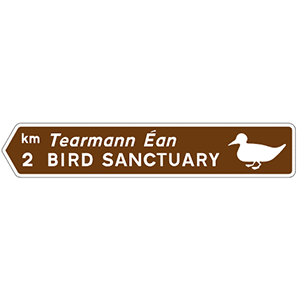
Tourist attraction direction sign
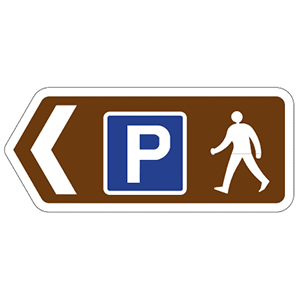
Pedestrian sign to a car park
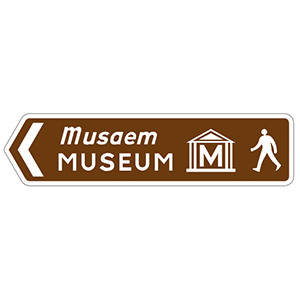
Pedestrian sign to a tourist attraction
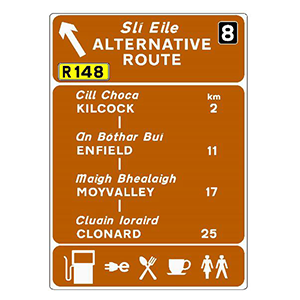
Alternative route off the motorway
Motorway Signs
To make the drivers aware of the road type that they are currently driving on the road and about the road type that they are going to enter in the upcoming region.

Motorway ahead

Motorway ahead

Advance direction sign
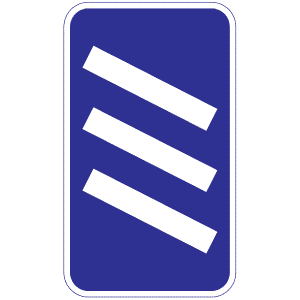
300m to next exit
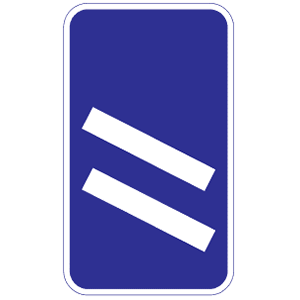
200m to next exit
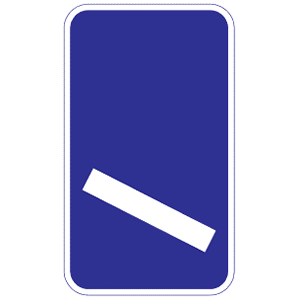
100m to next exit
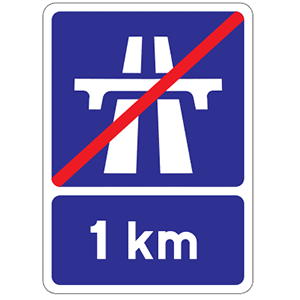
The motorway ends 1km ahead
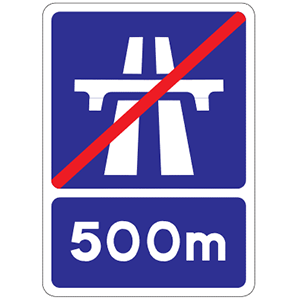
Motorway ends 500m ahead
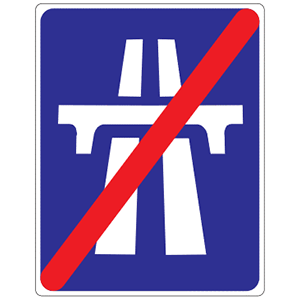
End of motorway
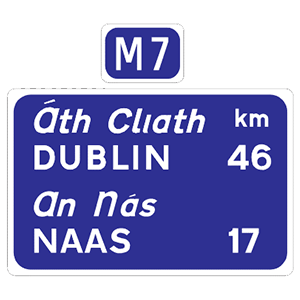
Route confirmatory sign for M7
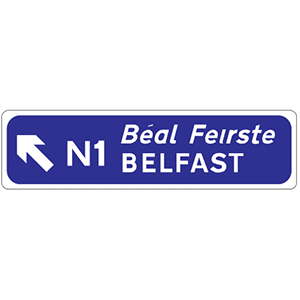
Advance direction for destination
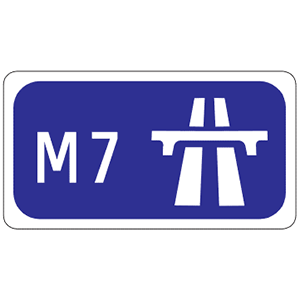
Entry to motorway
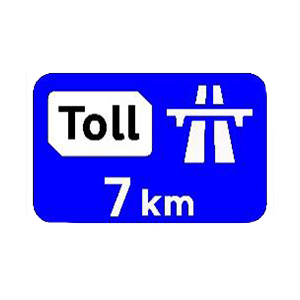
Toll plaza ahead

Toll charges
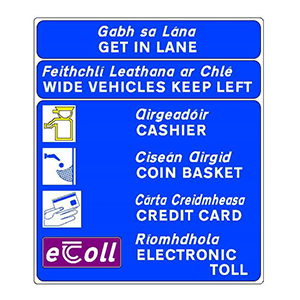
Toll plaza information sign
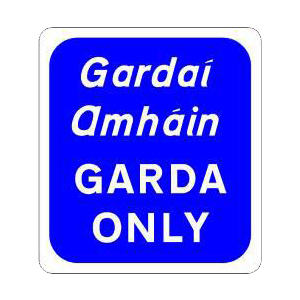
Garda only

Authorized vehicles only
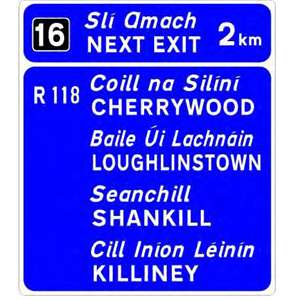
Typical 2km next exit sign
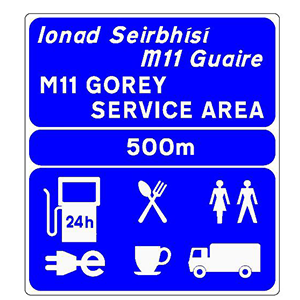
Motorway service plaza
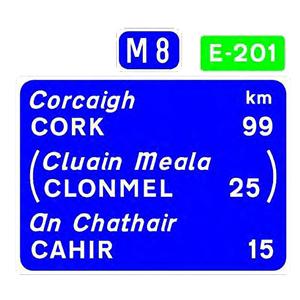
Route confirmatory sign with Euro Route marker plate
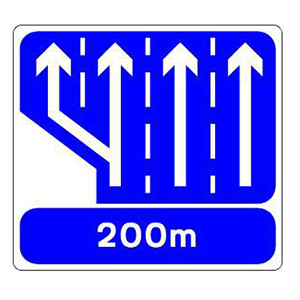
Typical lane gain sign
Frequently Asked Questions
You can find our most popular frequently asked questions around driving lessons below

